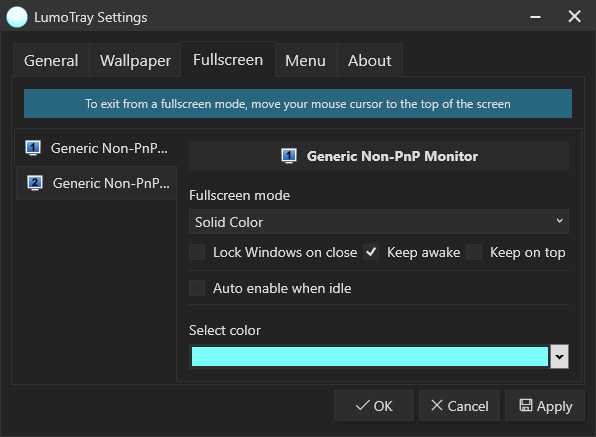Fullscreen
The Fullscreen tab is where you can configure the fullscreen mode for each of your displays.
As the name suggests, fullscreen modes will fill your entire display with the selected feature.

You can toggle or start fullscreen modes individually by using the tray icon’s context menu.
You can toggle all configured fullscreen modes simultaneously by using the tray icon option for all displays or by using the shortcut to launch all fullscreen modes (which by default is double-clicking the tray icon)
Closing a fullscreen mode can be done by clicking the same tray icon option again or by moving your mouse cursor to the top of the display where a fullscreen mode is open to reveal the close button.
Note
When all fullscreen modes are opened at once (either by using the shortcut or the context menu option), closing one, will also close all other opened modes.
To close them individually, they’ll have to also have been opened individually.
Common Settings

The following common options exist for all fullscreen modes:
Lock Windows session on close (default is off). This will lock your windows session when exiting from this fullscreen mode.
Keep awake (default is on). This will prevent your computer from going to sleep while this fullscreen mode is enabled.
Keep on top (default is off). This will make the fullscreen mode be the top most window and should make it stay above any other windows.
Auto enable when idle for X minutes (default is off). This option allows for a fullscreen mode to auto-enable once the system is idle for a configurable number of minutes.
Note
To close a fullscreen mode, move your mouse cursor to the top of the screen to show the close button. You can alternatively also use the “Toggle all fullscreen modes” shortcut.